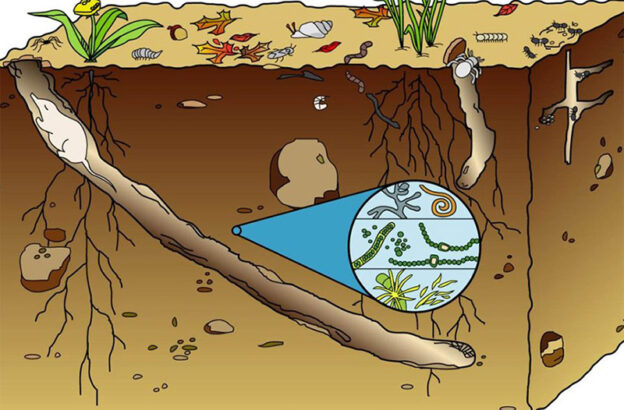Soil – Part 1
Soil is a layer of material covering the earth’s surface from which plants grow and obtain water, air nutrients and anchorage.
The constituents of soil include; particles of sand or clay (inorganic materials), water, humus, air, dissolved salts and living organisms.
SOIL COMPONENTS
Living organisms:
These are of two types, the microorganisms and microorganisms.
Microorganisms are those that are too small to be seen by a naked eye; they are microscopic organisms. These include bacteria, fungi, algae, protozoa, nematodes among others
Importance of microorganisms in soil
- The microorganisms breakdown organic matter and humus into soluble substances that can be taken up by plants. They enable recycling of nutrients in soil.
- When they die, they also add to the nutrients in soil
- Some of them such as bacteria convert Nitrogen (atmospheric) to organic Nitrogen compounds which can be used by other organisms.
Questions
- Define soil
- Mention the six components of soil
- What are microorganisms? Give two examples of microorganisms
- List two importance of microorganisms in soil

